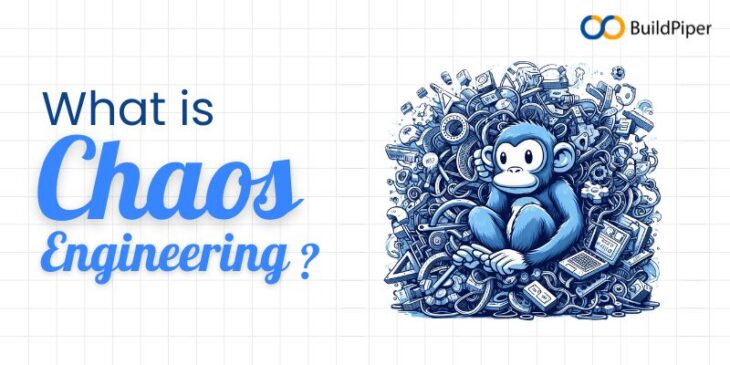
As organizations increasingly rely on complex and interconnected systems, the need to proactively identify vulnerabilities and enhance system resilience has never been more critical. Chaos Engineering, a discipline pioneered by tech giants like Netflix, seeks to address this challenge by intentionally injecting controlled disruptions into a system to uncover weaknesses and potential points of failure.
This blog will serve as a comprehensive exploration of Chaos Engineering – from its fundamental principles to practical implementation strategies. Here, we’ll define chaos, its concepts and understand how it is implemented.
Let’s embark on this journey as we explore Chaos Engineering and its core principles. Also, learn how organizations across industries are leveraging this approach to enhance the reliability and performance of their mission-critical systems.
What is Chaos Engineering?
Chaos Engineering is a discipline that involves deliberately injecting failures and disturbances into a system to test its resilience and identify potential weaknesses before they can cause significant problems. The main goal is to proactively discover and address vulnerabilities in a system’s design or implementation, ultimately making it more robust and capable of withstanding unexpected failures.
Key Concepts
Key concepts of Chaos Engineering include:
- Hypothesis Testing: Chaos Testing starts with forming hypotheses about how a system should behave under specific conditions. These hypotheses are then tested by intentionally introducing failures.
- Automated Testing: To simulate chaotic conditions, automated tools and scripts often introduce controlled disturbances, such as network latency, server failures or other environmental issues.
- Continuous Improvement: Chaos Engineering is an ongoing and iterative process. After running experiments and observing the system’s behaviour, teams can make improvements to enhance the system’s resilience continually.
- Monitoring and Observability: Comprehensive monitoring and observability are crucial for Chaos Testing and engineering. Teams need to closely observe how the system responds to simulated failures and gather data to analyze the impact.
- Incremental Changes: Chaos Engineering advocates making small, incremental changes to the system rather than implementing significant repairs. This allows teams to learn and adapt gradually.
Chaos Engineering is often associated with distributed and cloud-native systems, where components are interconnected and dependencies can be complex. By systematically introducing failures in a controlled environment, teams can gain insights into potential weaknesses and improve the system’s overall reliability.
How to implement Chaos Engineering?
Implementing Chaos Engineering involves deliberately injecting failures and disruptions into a system to identify weaknesses and improve its resilience. Here’s a set of instructions on how to implement Chaos Engineering.
- Define Objectives and Hypotheses
Clearly define chaos. Know in detail about the objectives of your Chaos Engineering experiments. Identify what you want to achieve and formulate hypotheses around potential weaknesses or failure scenarios in your system. - Build a Hypothesis Registry
Create a registry to document and organize your hypotheses. This includes details about the experiment, the expected outcome and any necessary rollback or mitigation strategies. - Identify Critical Components and Services
Identify the critical components and services within your system. Focus on areas that, if they fail, could have a significant impact on the overall system’s performance or availability. - Create an Incident Response Plan
Develop a clear incident response plan that outlines the steps to be taken if an experiment results in unexpected consequences. This plan should include communication strategies, rollback procedures and methods for minimizing the impact on users. - Implement Monitoring and Observability
Chaos engineers must ensure that the system has robust monitoring and observability tools. This includes logging, metrics and tracing capabilities that allow you to observe the system’s behaviour before, during and after Chaos Engineering experiments. - Use a Chaos Engineering Tool
Consider using dedicated Chaos Engineering tools like Chaos Monkey (for cloud environments), Gremlin or others that are designed to automate the injection of failures. These tools often provide a controlled environment for running experiments. - Execute Controlled Experiments
Execute the Chaos Engineering experiments in a controlled and incremental manner. Start with small, well-understood experiments and gradually progress to more complex scenarios. Always monitor the system’s behaviour during these experiments. - Analyze Results
Chaos engineers need to analyze the results of each experiment against the defined objectives and hypotheses. They need to look for weaknesses, vulnerabilities or areas where improvements can be made to enhance system resilience. - Iterate and Improve
Use the insights gained from each experiment to make improvements to the system. This may involve optimizing configurations, adding redundancy or enhancing error recovery mechanisms. - Integrate Chaos Engineering into Continuous Testing
Integrate Chaos Engineering into your continuous testing and deployment pipelines. This ensures that resilience testing becomes a regular part of the development lifecycle.
Chaos Engineering is an ongoing process and its success lies in the continuous identification and mitigation of weaknesses in your system. Regularly analyze and update your Chaos Engineering practices as your system evolves.
Final Conclusion
As we navigate the ever-evolving landscape of technology, chaos engineering stands as a beacon, guiding organizations towards robust, adaptable and fault-tolerant systems. It’s not just about surviving in the face of uncertainty, it’s about thriving amidst the chaos, emerging stronger and more prepared for whatever challenges lie ahead.
BuildPiper introduces cutting-edge Chaos Engineering features, empowering your teams to proactively identify weaknesses in your systems and enhance overall system resilience. Schedule a demo NOW!



